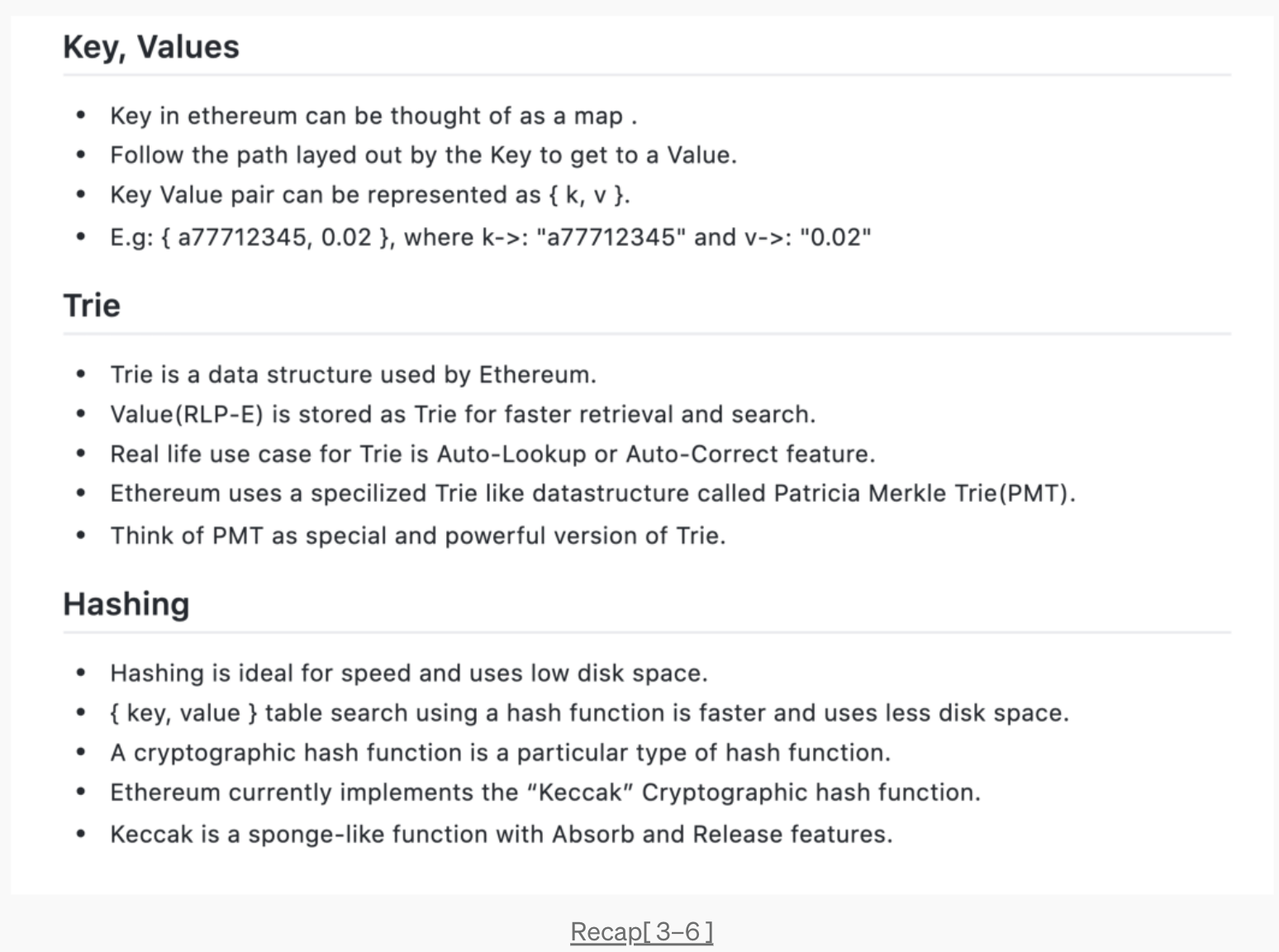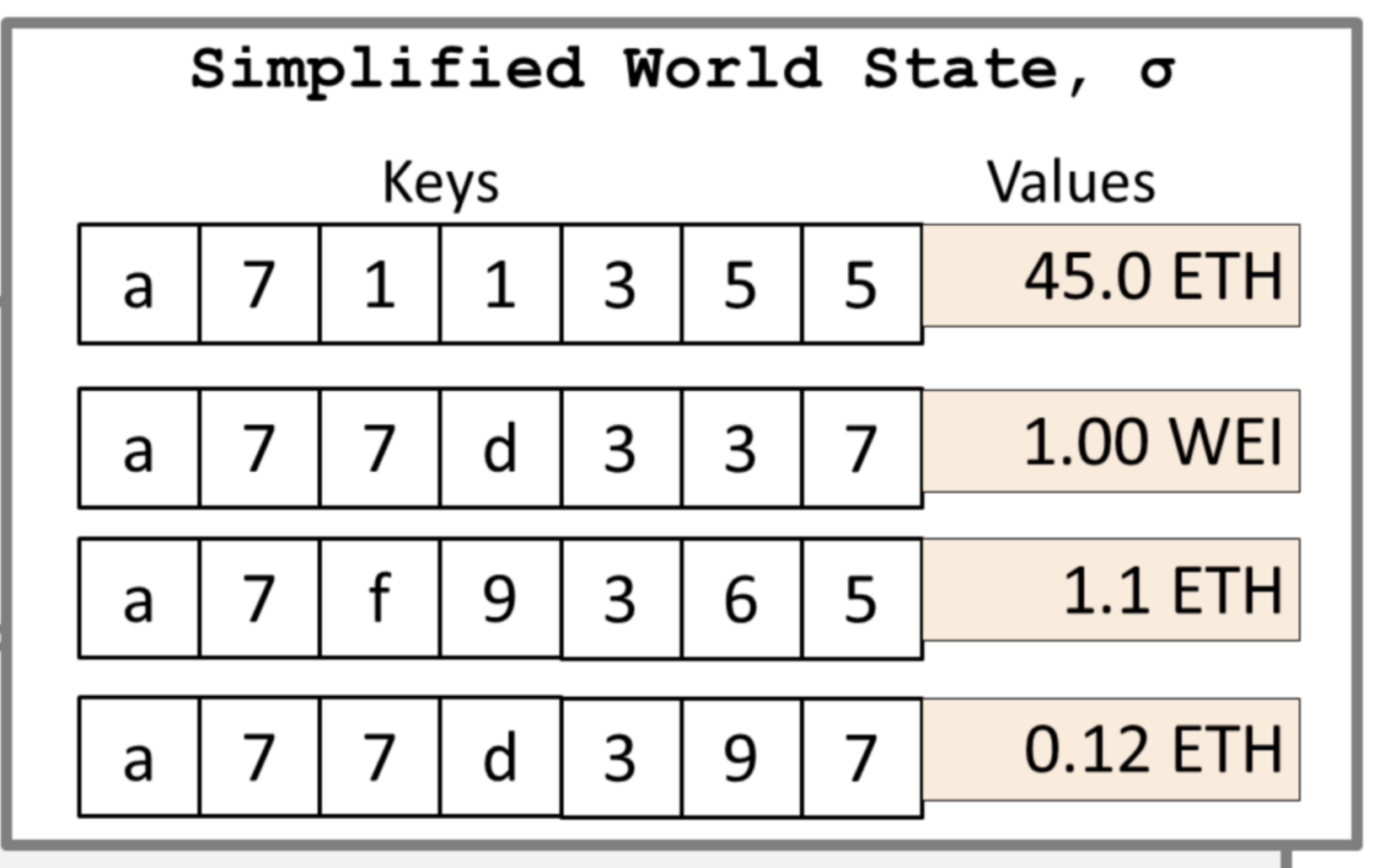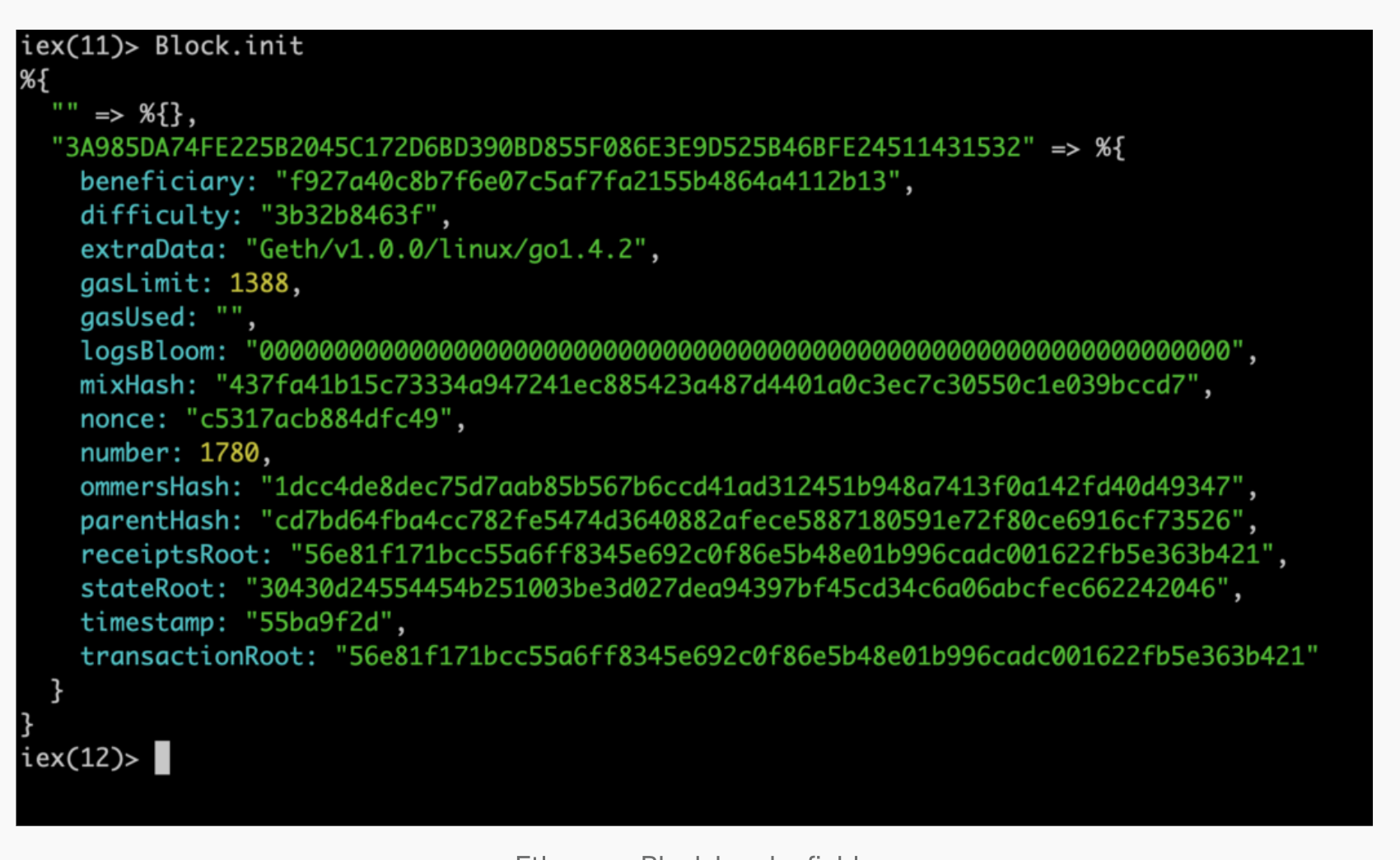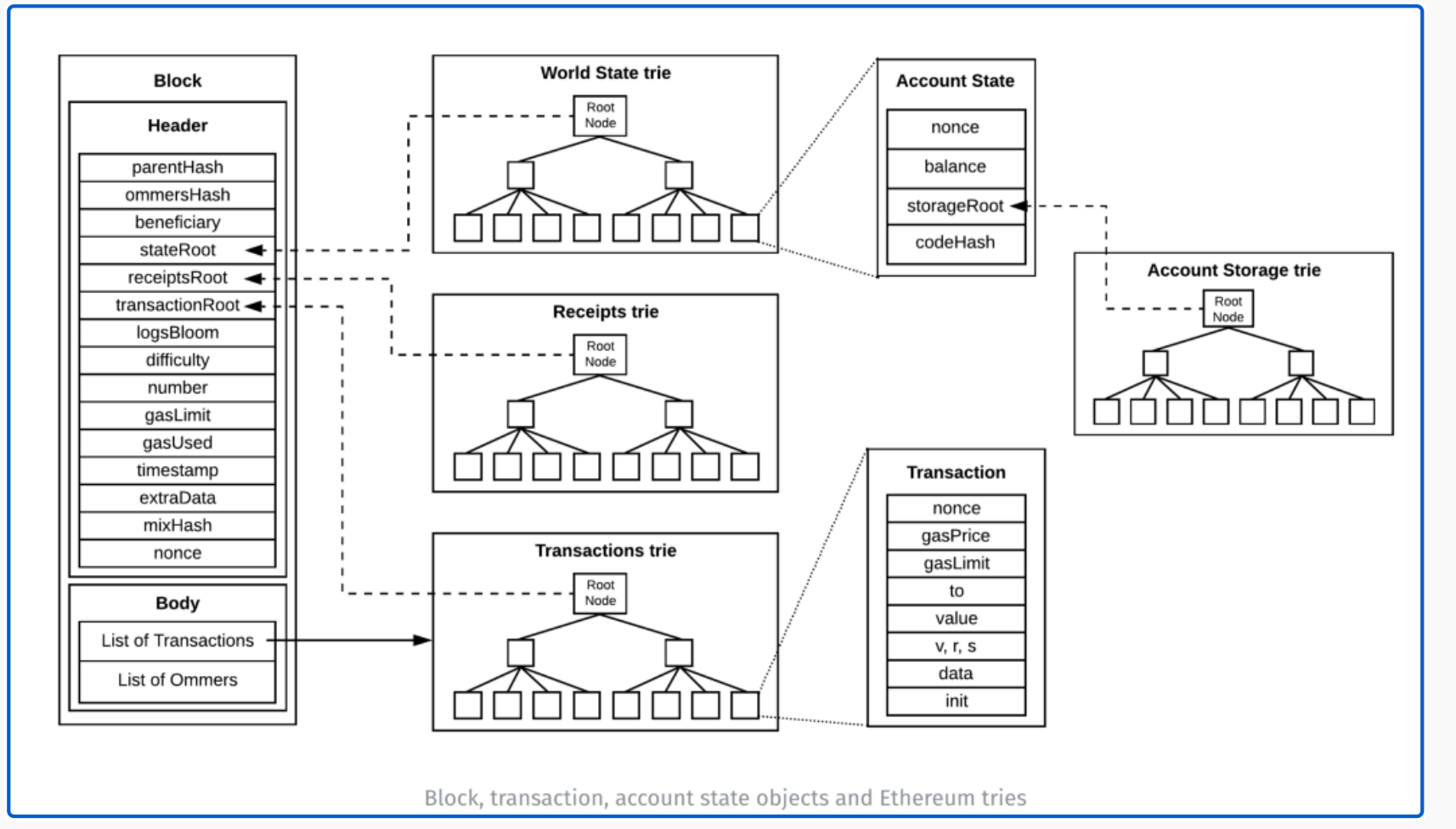Ethereum under the hood- Part 7( Blocks )

Welcome back and a happy new year. Glad you are still with me as we dig venture into the internals of Ethereum. In chapter 6, we discussed Hashing; in this section, we dive into Blocks. Block is a big topic to cover in one single medium post, so I intend to split Blocks into 2 Parts and Part-1 of Blocks short, so in Block Part 1 we cover:
- Quick review
- Blocks
- Block Header
- Summary
- Onwards.
Quick Review:
We are dipping a little deeper into our journey of exploring Ethereum, but it’s good to pause and recap what we have learned so far, I have created a public gist to refresh our collective memories, for this overview, let us focus on Part 3 through 6.

Blocks:
The block is the core of the concept of a BlockChain; a Block is a historical recordkeeper of the list of transactions. There is a lot of information packed into that statement. Ethereum, like its predecessor Bitcoin, has the concept of a Blockchain, and to understand a Block, we will approach a Block as a Data structure.
The Ethereum Yellow paper, defines a Block as a collection of three entities 1. Block Header 2.Transaction(s) List 3.Ommers List, formally defined as:

A block is a data structure similar to that has a set of validated transactions.
Block Header:
Block header, as the name suggests is the header of a Block, Blockheader is composed of 15 distinct fields as per the yellow paper, I tried capturing them in a spreadsheet, similar to the one below:

Each one of those fields needs a separate chapter by itself, we will not go into the details of each one of those 15 fields but will focus on a few. I would recommend having a look at Part-4( The trie ) as a refresher. Now back to the Block Header fields
ParentHash: This field, as the name refers to the Parent’s Keccak hash of this block. The field size would be 256-bit Keccak hash function, primarily the hash value indicates the immediate parent of this block, using this technique is how Ethereum links one block to another, forming a chain of blocks.
StateRoot: This refers to the Keccak hash root of a collection of the state trie (post-execution), which has occurred since the creation of this block, a { key, value } collection. There is only one global state that is updated continuously, and each block will have the root hash of the state trie DB.

Keys -> { Ethereum Address 160 bit }
Values -> { Nonce,Balance,StorageRoot,CodeHash }TransactionRoot: Keccak Hash of the root node of Transaction Trie: This field refers to the Keccak hash root of a collection of all the Transaction trie, which has occurred since the creation of this block.
ReceiptsRoot: Keccak Hash of the root node of Transaction Trie: This field refers to the Keccak hash root of a collection of all the Transaction trie, which has occurred since the creation of this block. The Receipt (R) is a Tuple comprised of 4 fields. Ethereum yellow paper has, in some detail, mentioned the receipts root field. The receipts field is a collection of

| Description | Symbol |
| :— — — — — - - -:|: — — — — -:|
| Total Gas Spent | Ru |
| Bloom Filter Root| Rb |
| Logs of the Tran | Rl |
| Status Code | Rz |The logs (Rl) and Bloom filter root (Rb) fields are described in detail in the yellow paper; Bloom Filters do need a separate section, and I am planning to discuss them in Part-8 but for now, let us think of Bloom filters as an algorithm that can help speed up search time results.

Below is a codified structure of the Ethereum Block header in Elixir, I have also provided a link to the go codebase.

Block Header Structure:
Have a look at this excellent visual representation from Lucas Saldanha of the Ethereum Block structure, and its various links to tries.

Summary:
- A Block comprises of Block Header and transactions.
- Block Header comprises of 15 fields.
- State, Transactions, Receipts header fields have pointers to the root hash.
Onto:
In section-8, we will continue exploring Blocks, Genesis Block, and Block verification, until then learn on.
References:




